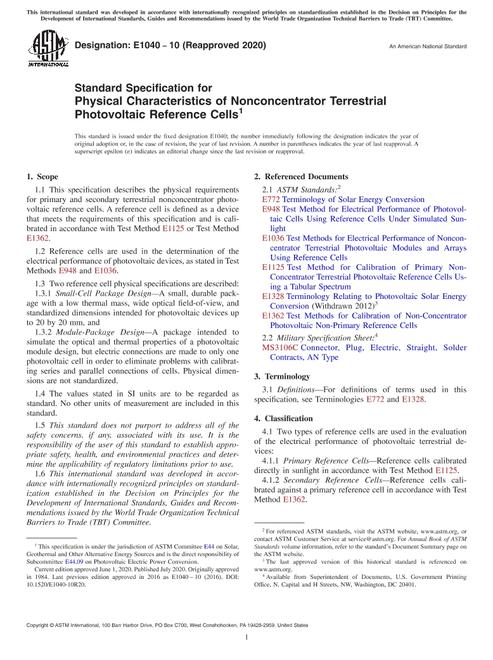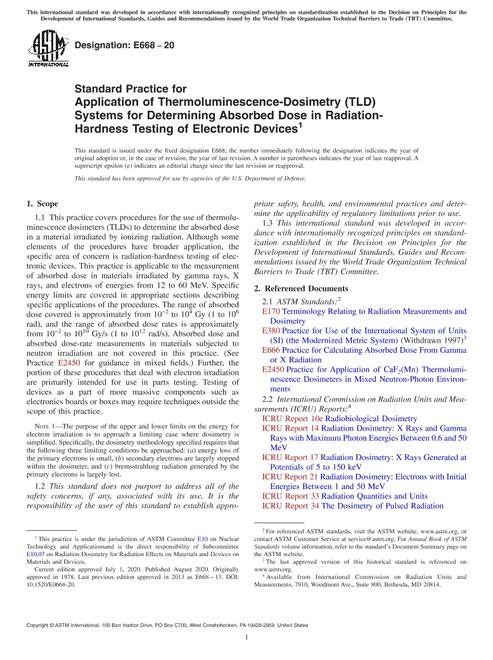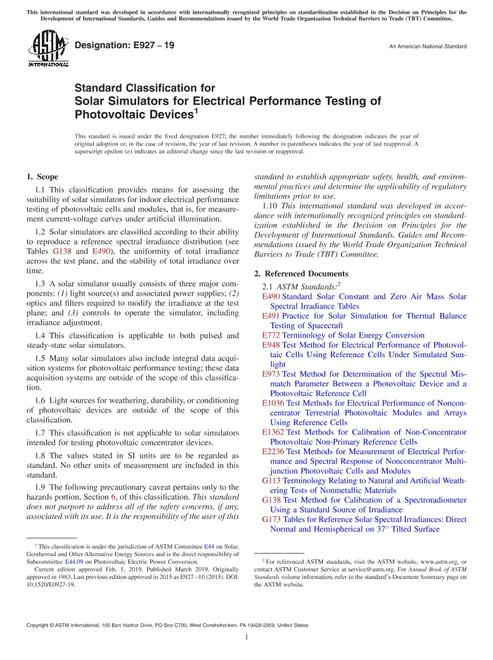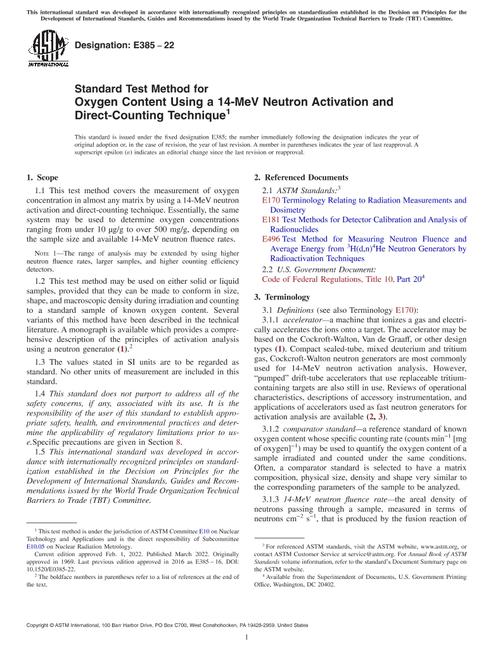-
-
Available Formats
- Options
- Availability
- Priced From ( in USD )
-
Available Formats
-
- Immediate download
- $58.00
- Add to Cart
-
- Printed Edition
- Ships in 1-2 business days
- $58.00
- Add to Cart
Customers Who Bought This Also Bought
-

ASTM E1040-10(2020)
Priced From $44.00 -

ASTM E668-20
Priced From $56.00 -

ASTM E927-19
Priced From $48.00 -

ASTM E385-22
Priced From $54.00
About This Item
Full Description
1.1 This method describes general procedures for measuring the specific activities of radioactive nuclides produced in radiometric monitors (RMs) by nuclear reactions induced during surveillance exposures for reactor vessels and support structures. More detailed procedures for individual RMs are provided in separate standards identified in and in Refs
1.1.1 The measurement procedures include corrections for detector background radiation, random and true coincidence summing losses, differences in geometry between calibration source standards and the RMs, self absorption of radiation by the RM, other absorption effects, and radioactive decay corrections
1.1.2 Specific activities are calculated by taking into account the time duration of the count, the elapsed time between start of count and the end of the irradiation, the half life, the mass of the target nuclide in the RM, and the branching intensities of the radiation of interest. Using the appropriate half life and known conditions of the irradiation, the specific activities may be converted into corresponding reaction rates
1.1.3 Procedures for calculation of reaction rates from the radioactivity measurements and the irradiation power time history are included. A reaction rate can be converted to neutron fluence rate and fluence using the appropriate integral cross section and effective irradiation time values, and, with other reaction rates can be used to define the neutron spectrum through the use of suitable computer programs
1.1.4 The use of benchmark neutron fields for calibration of RMs can reduce significantly or eliminate systematic errors since many parameters, and their respective uncertainties, required for calculation of absolute reaction rates are common to both the benchmark and test measurements and therefore are self canceling. The benchmark equivalent fluence rates, for the environment tested, can be calculated from a direct ratio of the measured saturated activities in the two environments and the certified benchmark fluence rate
Document History
-
ASTM E1005-21
Standard Test Method for Application and Analysis of Radiometric Monitors for Reactor Vessel Surveillance- Most Recent
-
ASTM E1005-16
Standard Test Method for Application and Analysis of Radiometric Monitors for Reactor Vessel Surveillance- Historical Version
-
ASTM E1005-15
Standard Test Method for Application and Analysis of Radiometric Monitors for Reactor Vessel Surveillance- Historical Version
-
ASTM E1005-10
Standard Test Method for Application and Analysis of Radiometric Monitors for Reactor Vessel Surveillance, E 706(IIIA)- Historical Version
-
ASTM E1005-03e1
currently
viewing
Standard Test Method for Application and Analysis of Radiometric Monitors for Reactor Vessel Surveillance, E 706(IIIA)- Historical Version
-
ASTM E1005-03
Standard Test Method for Application and Analysis of Radiometric Monitors for Reactor Vessel Surveillance, E 706(IIIA)- Historical Version
-
ASTM E1005-97
Standard Test Method for Application and Analysis of Radiometric Monitors for Reactor Vessel Surveillance, E 706(IIIA)- Historical Version





